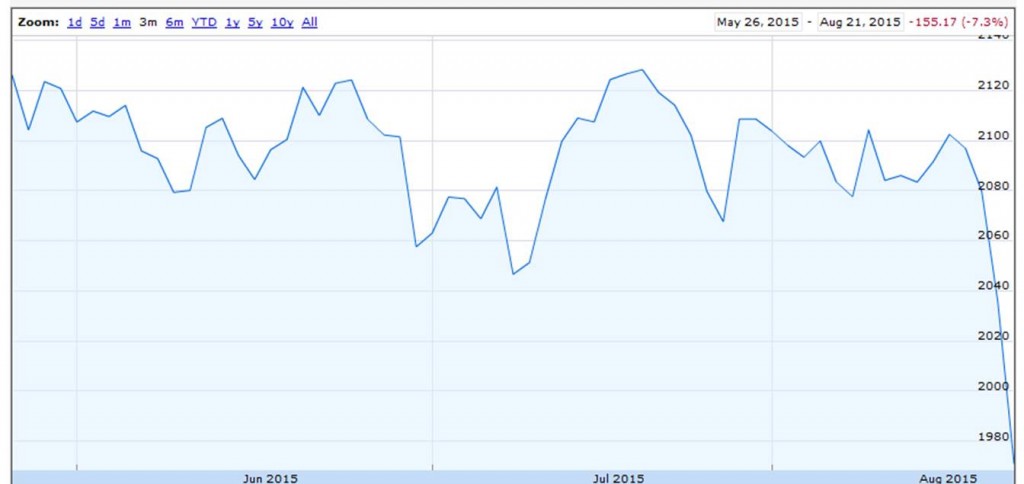The Shanghai stock market has undergone some wild gyrations over the last year… and back in 2008. Following up on To Log or Not to Log, Part IV:
Category Archives: financial markets
To Log or Not to Log, Part IV
Do stock price indices follow a random walk? No, but log stock price indices do…kind of
On China, and Preventing the Financial Runs of August
Reasoned analysis and careful decisionmaking is required.
China’s economic slowdown
U.S. stock prices as measured by the S&P500 fell almost 7% last week. What’s going on?

Value of S&P500 index over last 3 months. Source: Google Finance.
Continue reading
Guest Contribution: “Recent Experience with Monetary Sovereignty”
Today we are fortunate to have a guest contribution by Helen Popper, professor of economics at Santa Clara University.
Guest Contribution: “Were Chinese regulators responsible for the recent stock market bubble?”
Today we are fortunate to have a guest contribution written by Jeffrey Frankel, Harpel Professor of Capital Formation and Growth at Harvard University, and former Member of the Council of Economic Advisers, 1997-99.
Guest Contribution: “Should Emerging Markets Fear A Fed Lift-Off?”
Today we are fortunate to have a guest contribution written by Carolina Osorio Buitron, Esteban Vesperoni, and Prakash Loungani, from the Research Department of the International Monetary Fund. The views expressed in this blog are solely those of the authors and do not necessarily represent the views of the IMF, its management, nor its Executive Board.
The US in Recession? The World?
This headline “US Recession Imminent – Durable Goods Drop For 5th Month, Core CapEx Collapses”, following on “Forget Recession: According To Caterpillar There Is A Full-Blown Global Depression”, impelled me to check to see if I’d missed something.
A Brief Note on Yuan Exchange Rate Pass-through to US Imports from China
In today’s WSJ, Justin Lahart notes “China Wind Chills U.S. Earnings”, and presents an interesting graph of import prices, which inspired me to look more closely at the issue.
“Spillovers of conventional and unconventional monetary policy: the role of real and financial linkages”
That’s the topic of a conference sponsored and hosted by the Swiss National Bank and co-sponsored with the Bank for International Settlements (BIS), the Dallas Fed, the Centre for Economic Policy Research (CEPR), and the Journal of International Money and Finance.